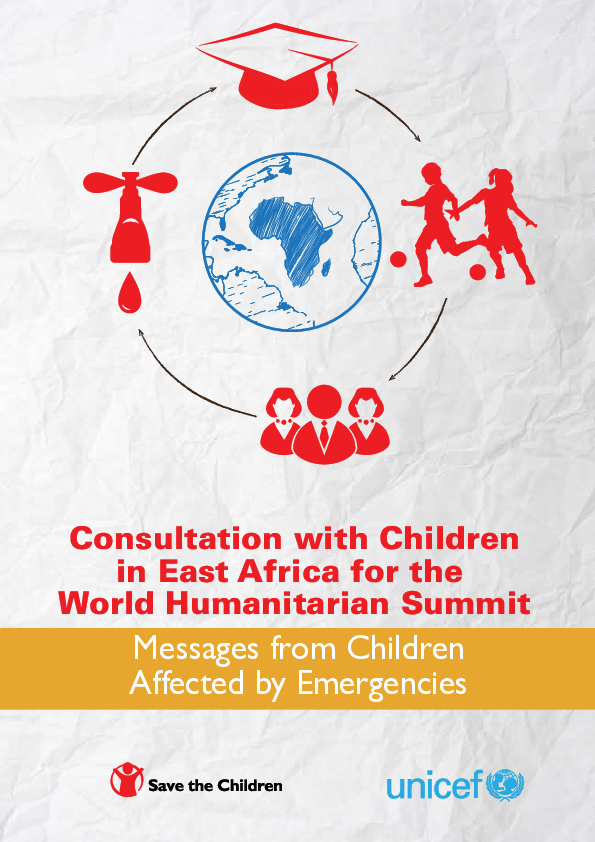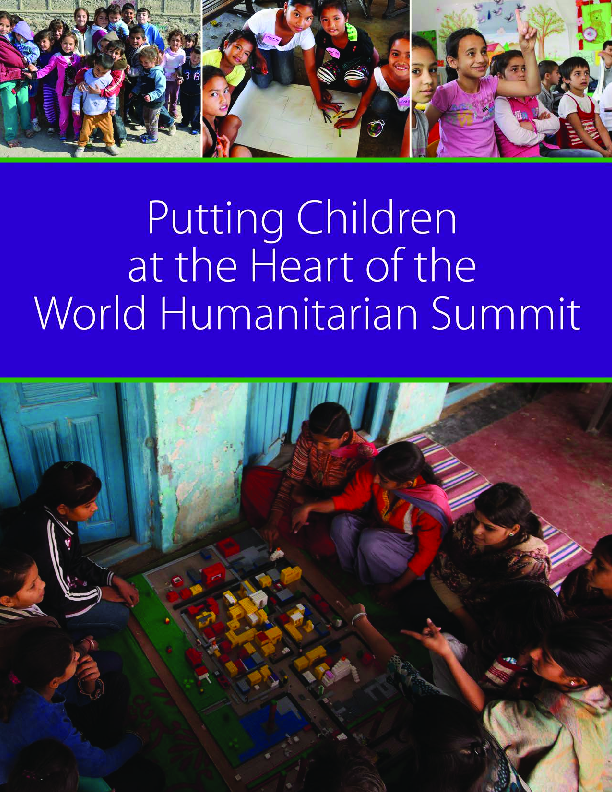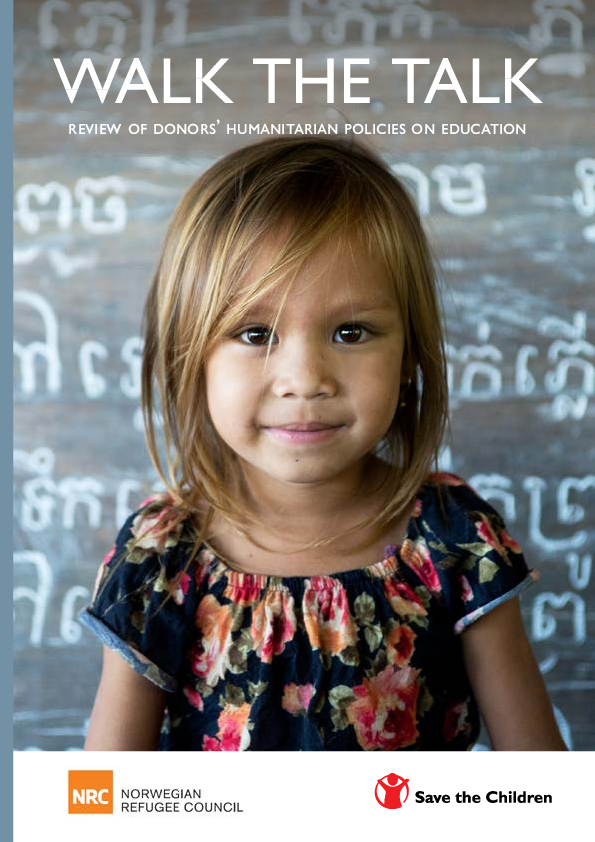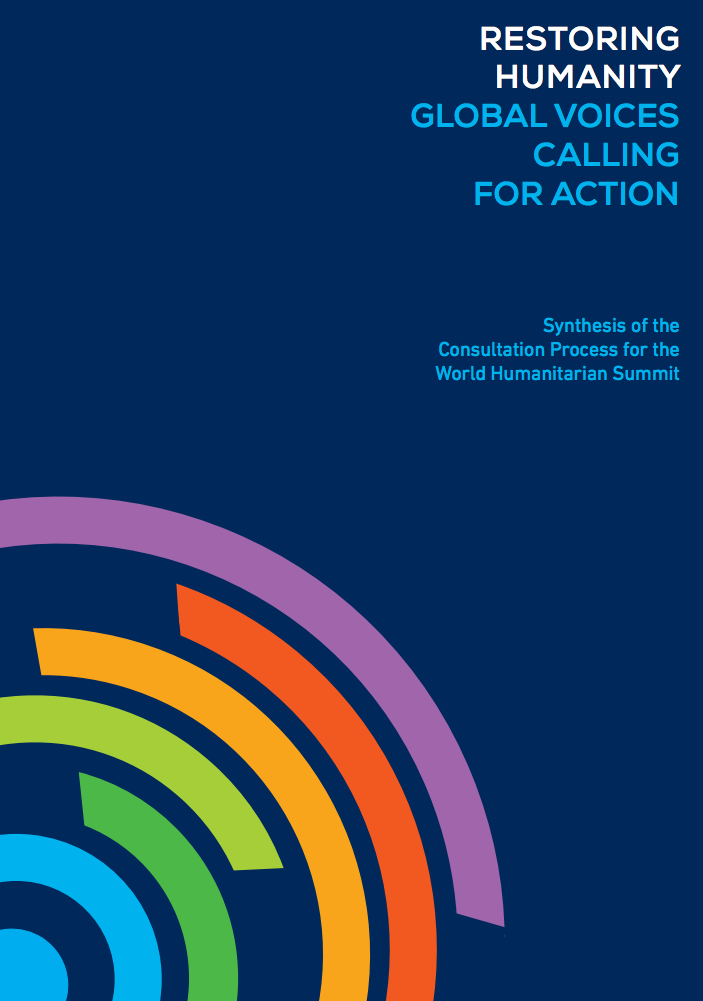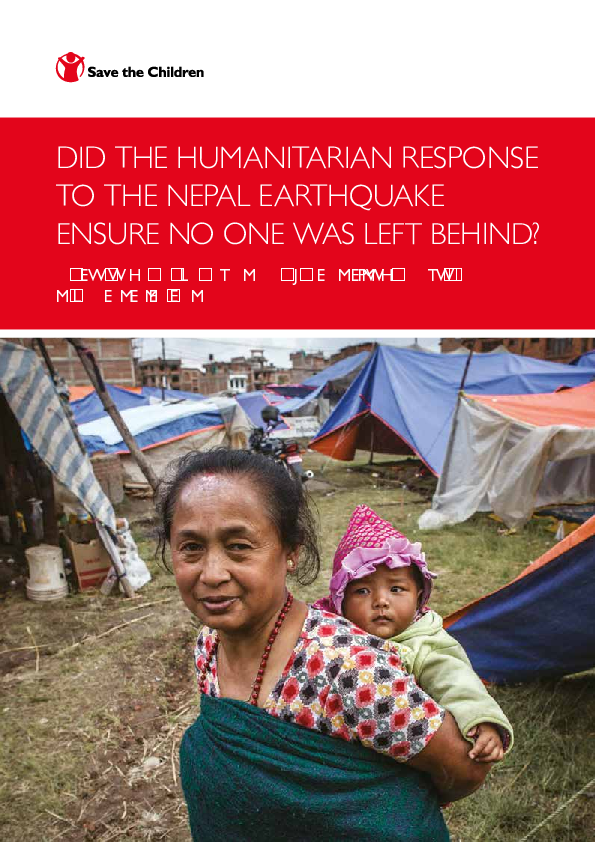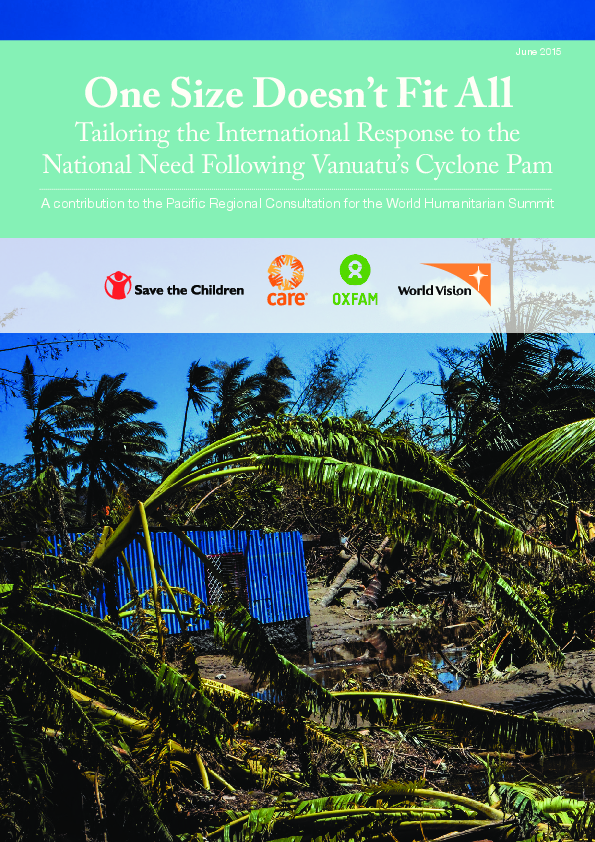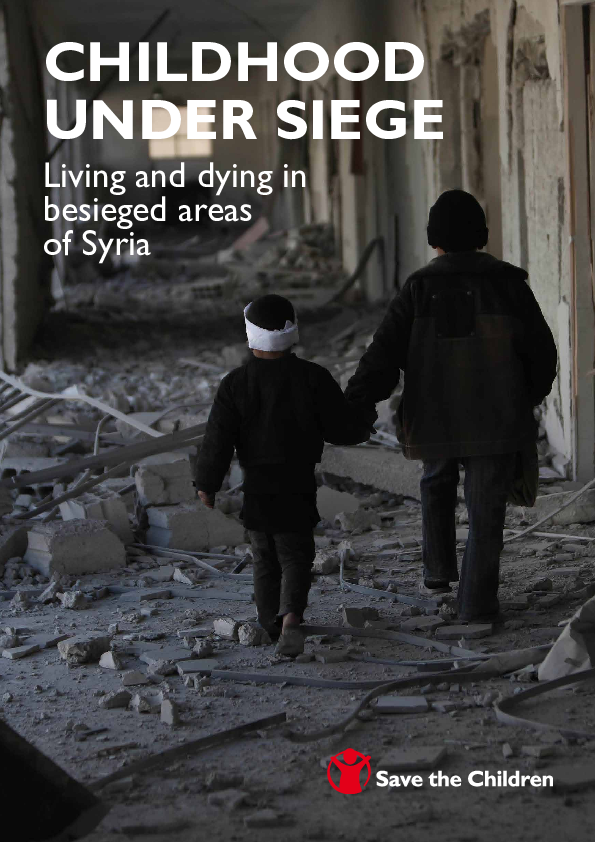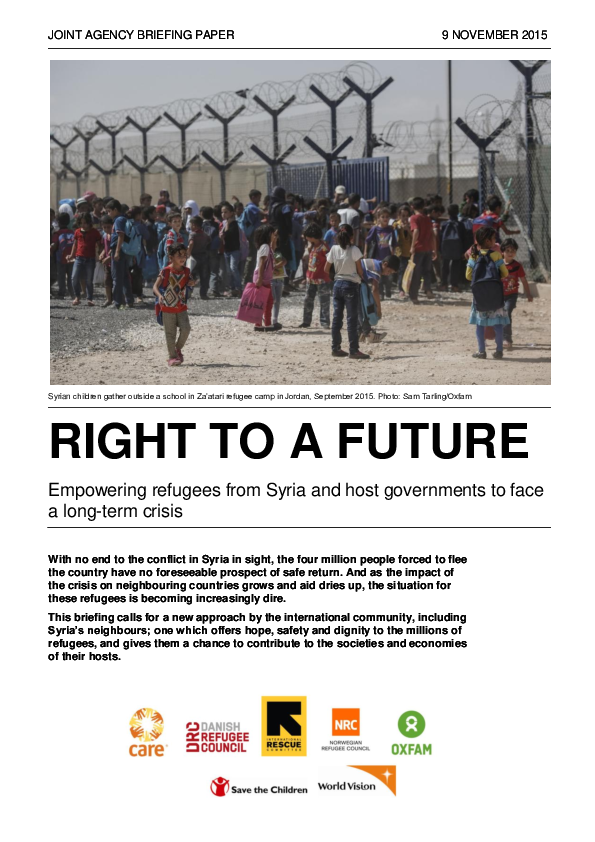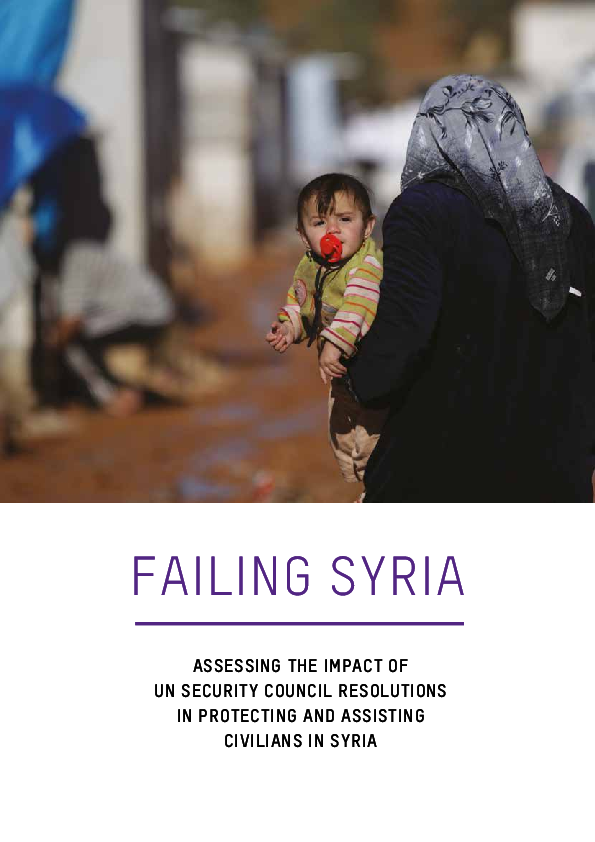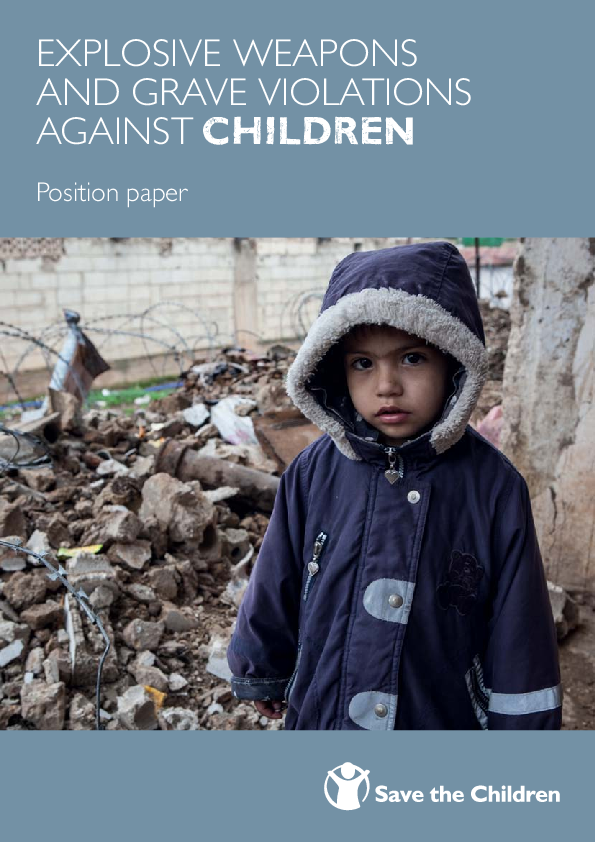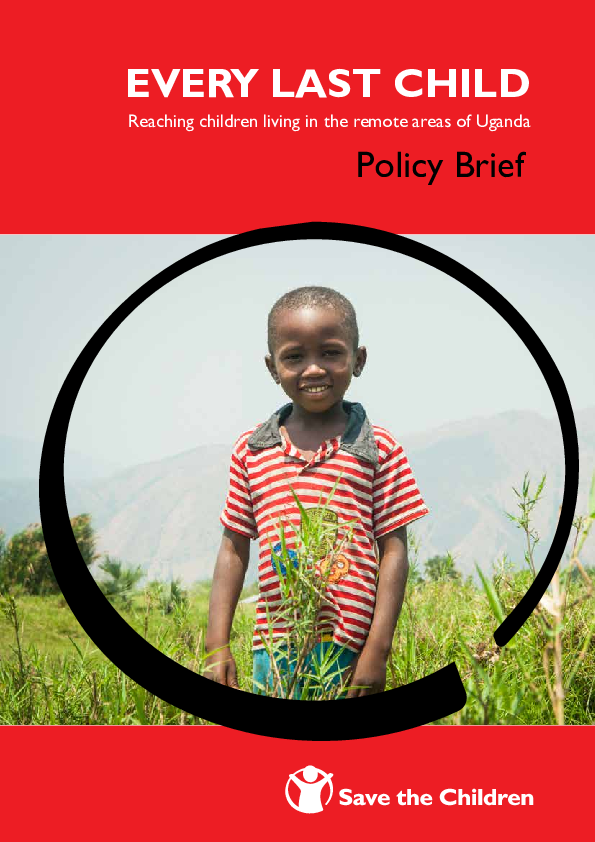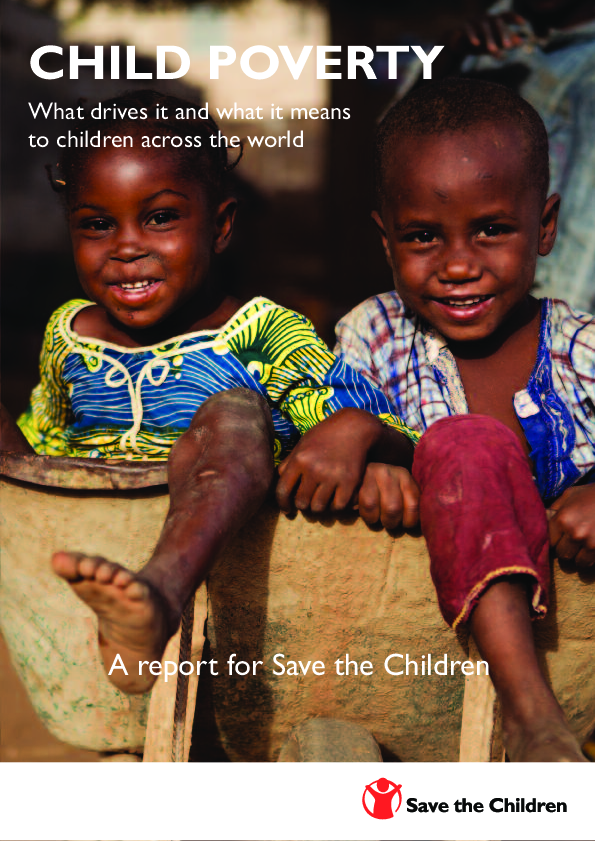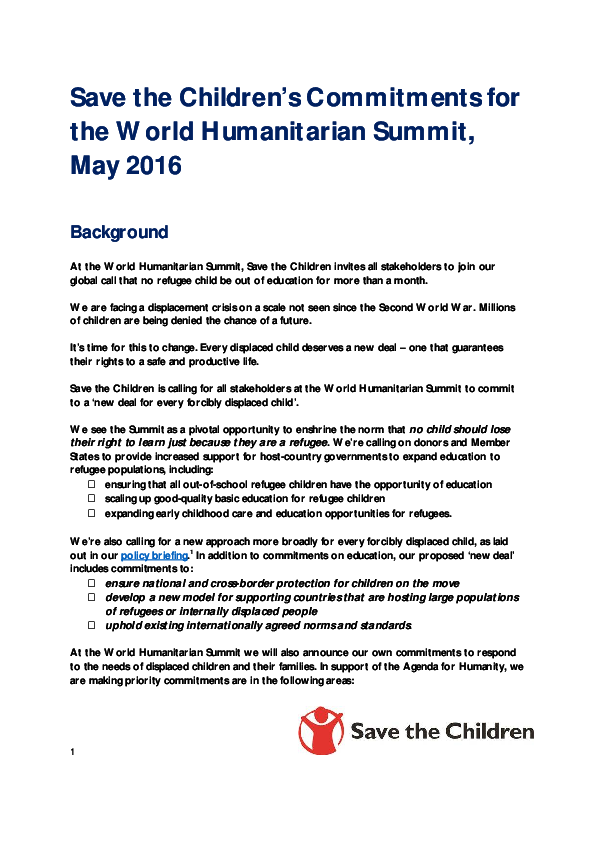World Humanitarian Summit: moving the agenda forward for refugee children
Share:
The World Humanitarian Summit promised to be a revolution in the way the world addresses humanitarian emergencies. One of the commitments made was that education should be seen as a humanitarian priority, just as important as food and shelter in a crisis. - On Save the Children’s core policy of making sure that no refugee child is out of school for more than a month, we have moved closer to our goal, said Helle Thorning-Schmidt, CEO of Save the Children International, at the close of the Summit.
Around 8,000 people, representing governments from 173 countries, NGOs, civil society organisations including youth organisations, the private sector, academia and the UN came together in the first ever World Humanitarian Summit held the 23-24 of May in Istanbul. The Summit, an initiative of UN Secretary General Ban-Ki-moon, aimed to discuss how the world’s humanitarian actors can move from today’s traditional approaches to humanitarian response towards an approach more in line with today’s challenges and realities. One of these challenges is the one posed by migration and displacement, which has caused a crisis on a scale not seen since the Second World War.
Other challenges include the growing costs of humanitarian aid and increasingly protracted crisis and conflicts. The international humanitarian system was designed to respond to time-limited emergencies. However, today it supports service provision in crisis countries and refugee responses that go on for decades if not generations.
There is also diminishing respect for rule-based order, often compounded both by global leaders in their failure to respect and uphold global norms, and by parties involved in conflict which fail to comply with international humanitarian law. This is causing great suffering to civilian populations and significant obstacles to humanitarian actors.
Two years of consultations and nine regional meetings with global leaders, representatives of civil society, and people affected by crisis including children, were held during the process leading up to the Summit. As early as 2012, Ban Ki-moon had expressed concern over the growing amount of people on the move. Earlier this year, a report was published entitled “One Humanity; A Shared Responsibility” in which a vision for the future humanitarian system and principles was laid out. The report offers proposals on how to tackle current challenges, such as the migration crisis.
The Summit had three main goals: reaffirm the commitment to humanity and humanitarian principles; initiate actions and commitments which enable countries and communities to prepare for and respond to crises and be more resilient to shocks; and share best practices which help save lives around the world, placing affected people at the centre of humanitarian action and alleviating suffering. Five priorities were endorsed at the Summit: improve aid delivery, support refugees, uphold international law, increase financing and prevent the crises generating the largest migration flows in 70 years.
More than 1,500 commitments were made. One of them was the Grand Bargain, which represents a shift towards greater use of cash-based programming when appropriate. The Bargain also proposed that the major government donors of humanitarian assistance and the largest humanitarian organisations commit to making their spending more flexible, efficient, transparent and effective. Other commitments were: aid must be locally-driven, which means that 25% of funding will be directed to local and national agencies; the world must invest more in prevention of crisis; and humanitarian response should better include people with disabilities. The most important commitment for Save the Children was that education should be seen as a humanitarian priority, just as important as food and shelter in a crisis.
Currently, an estimated 60 million people are on the move; 30 million of them are children, many of whom are being denied the chance of a future as a result of a lack of education opportunities.
According to a study made by Save the Children, child refugees stranded in Greece have been out of school for an average of one and a half years. The study found that Syrian child refugees have been out of school for an average of 25.8 months, while Afghan child refugees spent an average of 10.7 months out of the classroom. Therefore, one of Save the Children’s most important objectives at the World Humanitarian Summit was to lay the foundations for A new deal for refugee children around the world. This campaign is part of the wider Every Last Child Global Campaign and its call to the international community to ensure that every last child learns and survives, and that no refugee or forcibly displaced child’s learning is disrupted for more than a month.

A New Deal for Every Forcibly Displaced Child
2016 · Save the Children UK
This briefing presents four areas of commitment for forcibly displaced children that Save the Children is calling for at the 2016 World Humanitarian Summit and... View Full Abstract
-Unless we prioritise education in emergencies, we risk creating a lost generation of children. Millions of refugees are out of school and with the average person displaced for 17 years, many will go almost their entire childhoods without having the chance to learn, Helle Thorning-Schmidt said.
-States, institutions, and businesses pledged their support to the cause, and we will now have better resources in place with the launch of the Education Cannot Wait fund, she continued.
The Education Cannot Wait fund will help to get millions of children affected by conflict and natural disasters back into school and redress a historic neglect of this area – currently, only 2% of humanitarian funding goes towards education.
Helle also stated that the organisation will continue to put pressure at two summits on refugees, held in New York in September, to ensure that all 3.5 million refugee children who are currently out of school have a chance to learn.
A full list of Save the Children’s commitments is available here
A book with compiled messages from displaced children and citizens all over the world, made by Save the Children, was delivered to Heads of States, high-level UN officials and other influential decision makers.
A summit, which has the aim of finding ways of preventing and ending conflicts, needs to address political will. However, all the leaders from the five permanent members in the UN Security Council, including Barack Obama, were absent.
-That is why I make a special appeal to leaders of the nations that are permanent Members of that Council to take important steps at the highest level. Their absence from this meeting does not provide an excuse for inaction, Ban Ki-moon said.
Save the Children, among others, expressed disappointment in the failure on finding ways of protecting civilians in war.
-One area where the summit has not delivered as much – and where we would like to see much greater action from world leaders – is in securing commitments to stop the grave violations against civilians that happen all too often in places like Yemen and Syria. Save the Children worked to ensure that the devastating use of explosive weapons in populated areas, which kills and maims countless children every year, was on the agenda at the conference and we now look for political action on this issue, said Helle Thorning-Schmidt.
–The commitments made here need to be implemented in the next six months and participants including politicians, the UN and NGOs like ours must be held to account, she concluded.
During the coming UN General Assembly meeting in August, there will be a follow-up where the commitments made by states and humanitarian organisations could be turned into a shared agenda.
-This unique Summit has set us on a new course. It is not an end point, but a turning point, UN Secretary-General Ban Ki-moon said in closing remarks.
Text: Elin Sahlin
Featured Resources
16 resources
Share
Link

